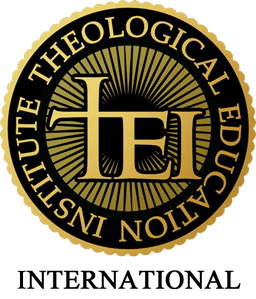The Babylonian Genesis
John C. Rankin
(April 4, 2014)
In contrast to the biblical Genesis, all pagan origin stories assume the original presence of destruction, and the nature of the human race as a by-product of totally or partially capricious gods, goddesses or spirits. The power to take is assumed from the outset, and it precedes and defines all.
As an example, alluded to earlier, among scholars who are skeptical toward the Bible, the most revered of these stories is the Babylonian Genesis (or Enuma Elish). Set forth as the best academic basis to challenge the historical trustworthiness of the Bible, the Babylonian Genesis cannot compare with the three key components of the biblical order of creation. We define them accordingly:
- Yahweh Elohim is the eternal and good Creator.
- The creation is ordered and good.
- Man and woman are the crown of Yahweh Elohim’s good creation and made free.
In contrast, the three key components of the Babylonian Genesis are these:
- Marduk (the chief Babylonian deity) is finite and destructive.
- The creation is rootless, chaotic and evil.
- Man and woman are a by-product intended for slavery.
The Babylonian Genesis starts with the assumption of a pantheon of time-bound, sexually promiscuous and pre-existent gods and goddesses, engaged in an intramural and internecine war. A second-level deity at the outset, Marduk, creates the universe by killing the chief goddess Tiamat, and dissecting her body – splitting it open like a mussel shell, making the heavens with one half of her carcass, and the earth with the other half. He then makes the defeated gods of Tiamat’s army into slaves, but they complain about this status. In response, Marduk kills his chief remaining opponent, Kingu, severs his arteries, and from his blood Marduk creates mankind to serve as slaves to the defeated pantheon.
Here we see the assumption of destruction. Mankind has to serve as slaves to the whims and caprice of defeated gods and goddesses, revealing a remarkably low view of man and woman. The Babylonians think they are bound by the positions of the sun, moon, planets and stars as gods (idolatry and astrology) in mundane and important decisions. They are bound to try and wrest favors from their fatalisms (sorcery), and at the extreme in many related religions, to make human sacrifice to placate the gods – all in an attempt to survive in a hostile universe, as they understood it.
But they also choose this worldview. Is our worth as human beings elevated or trashed by such an understanding? Do we take joy in a myth that the heavens and earth are made out of the dissected and bleeding carcass of a slaughtered goddess, and that we are made to be slaves to the gods, out of the blood of another dead god? This is Babylon’s height.
Babylonian religion starts with the assumption of destruction, then interjects a hope (of carving out survival) that is destined to disappoint, and it concludes with destruction remaining in its dualistic continuity. In other words, the reversal of the biblical Genesis:
destruction, disappointing hope, return to destruction, versus creation,sin, redemption.
But, by definition, how can destruction precede creation? Destruction can only destroy what has already been created. The Babylonian “genesis” is a reversal of reality.
An interesting aside in this myth is when Marduk dissects Tiamat’s body. The text reads:
“The lord rested, examining her dead body, To divide the abortion (and) to create ingenious things (therewith). He split her open like a mussel (?) into two parts; Half of her he set in place and formed the sky (therewith) as a roof… ” (Tablet IV, lines 135-138, translation of Alexander Heidel).
The word “abortion,” an act of intrinsic destruction (from the Latin ab + oriri, “to stop from rising,” “to cut off from being born”), is used here to describe Tiamat’s corpse. In other words, abortion is viewed as parallel to the corpse of one killed by an act of aggression, and as a means to create the universe. This is the Babylonian Genesis versus Genesis in the Hebrew Bible.
All human cultures start in Genesis, with Adam’s lineage at the first, then through Noah’s lineage. As peoples migrate away from Eden, then away from earliest Mesopotamia, and likewise later following Noah’s flood, they gradually mix mythologies in with dimming recollections of Yahweh Elohim’s revelation to Adam about creation.
Their oral traditions and written texts reflect a confusion of creation with destruction, despite their best hopes, since it is the only cultural experience they can judge by, cultures that shut down the image of God within, and recognition of one true Creator, despite knowledge deep in every human soul. And in a sinful world, with no faithful record of the order of creation at hand, destruction takes over – the power to take before being taken. Thus, for reality and hope, for the power to give, it is the biblical order of creation in which we must root ourselves.
###


